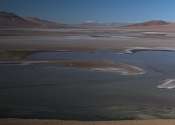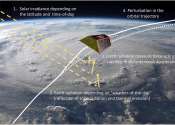The Journal of Geophysical Research is a peer-reviewed scientific journal published by the American Geophysical Union 80 times per year. It contains original research on the physical, chemical, and biological processes that contribute to the understanding of the Earth, Sun, and solar system. It has seven sections: A (Space Physics), B (Solid Earth), C (Oceans), D (Atmospheres), E (Planets), F (Earth Surface), and G (Biogeosciences). All current and back issues are available online for subscribers.
The journal was originally named Terrestrial Magnetism by the American Geophysical Union s president Louis Agricola Bauer in 1896. It was entitled Terrestrial Magnetism and Atmospheric Electricity from 1899–1948. In 1980, three specialized sections were established: A: Space Physics, B: Solid Earth, and C: Oceans. Subsequently, further sections have been added: D: Atmospheres in 1984, E: Planets in 1991, F: Earth Surface in 2003, and G: Biogeosciences in 2005.
The scopes of the current seven sections, published as separate issues, are:
Each of the sections has one or more editors who are appointed by and serve at the pleasure of the President of the American Geophysical Union for terms of
- Publisher
- American Geophysical Union
- Country
- United States
- History
- 1896–present
- Website
- http://www.agu.org/journals/jgr/
- Impact factor
-
3.303
(2010)
Some content from Wikipedia,
licensed under CC BY-SA









